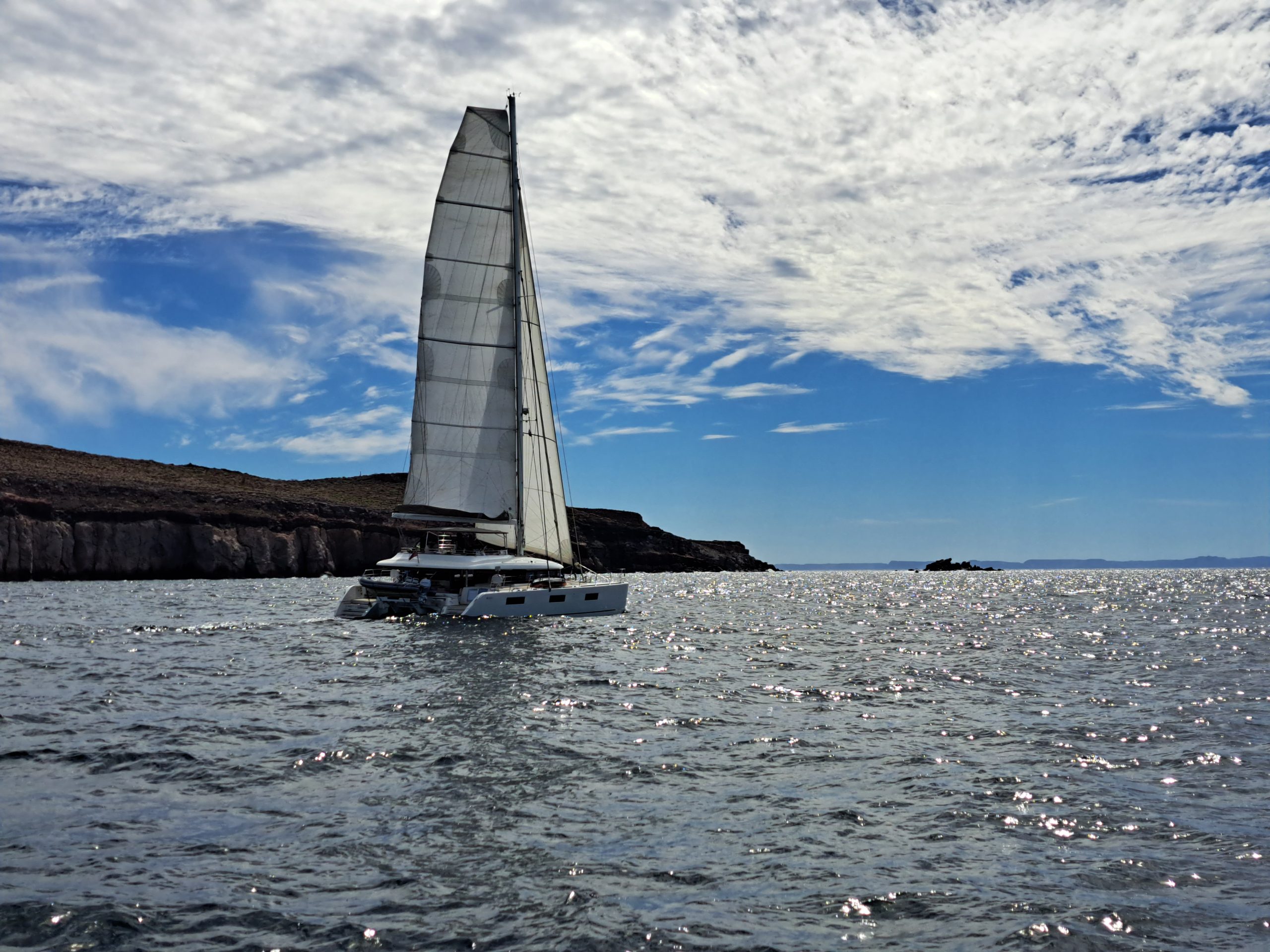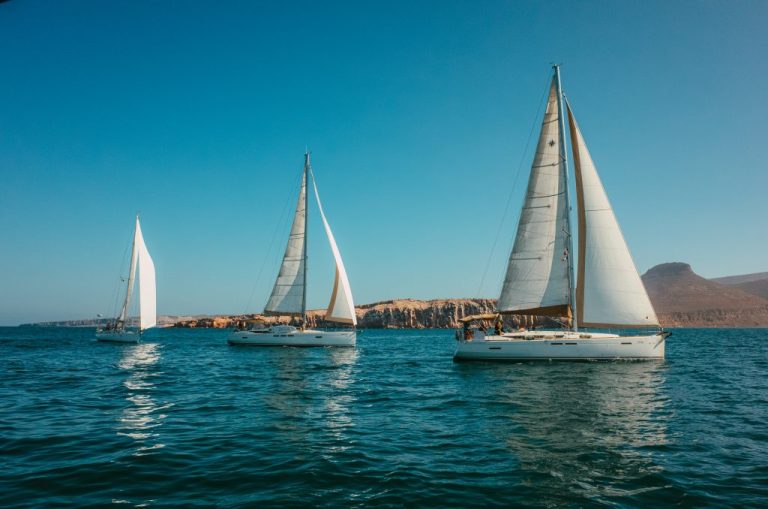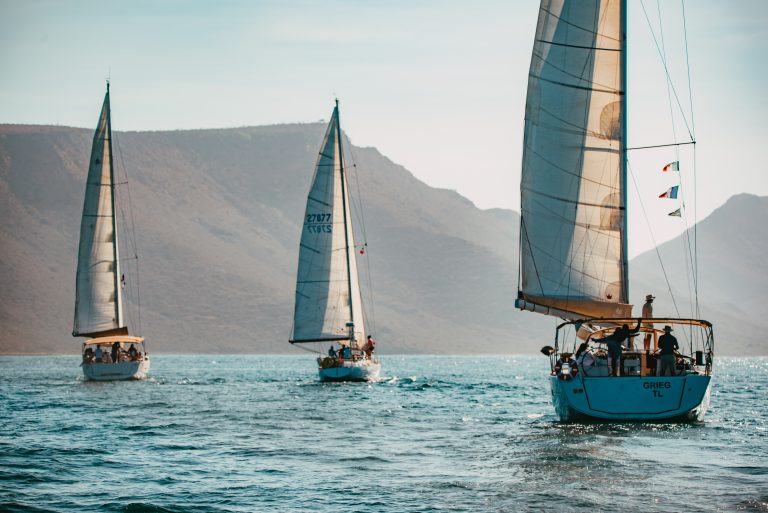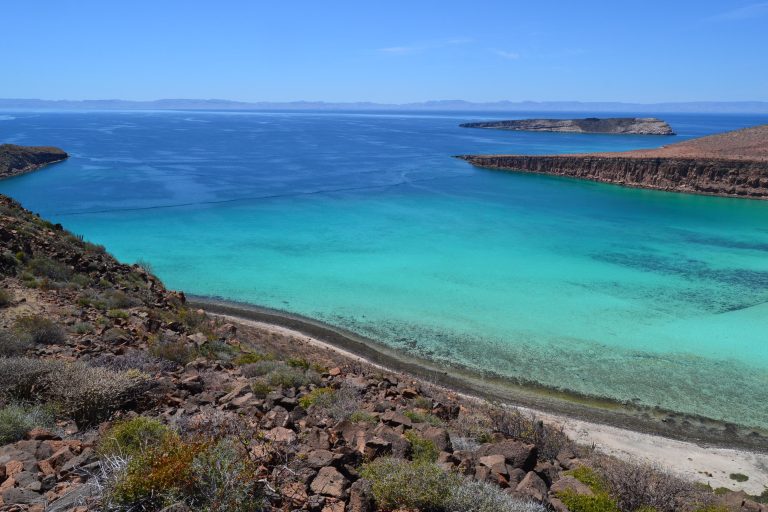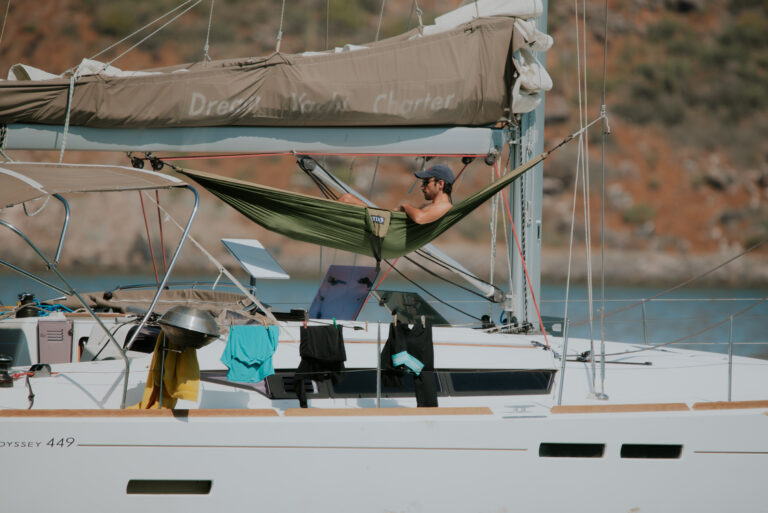Catamaran vs Monohull Sailing Holiday in Mexico —How to chose
Introduction
Picking the right boat changes your whole sailing holiday. Catamarans and monohulls both offer great ways to explore the Sea of Cortez, but they deliver very different experiences. This guide compares the two across stability, living space, sailing performance, safety, cost, comfort, and suitability for activities like snorkeling, learning to sail, and family trips. Use this to decide which platform fits your priorities — room and comfort, active sailing and heeling, or a mix of both.
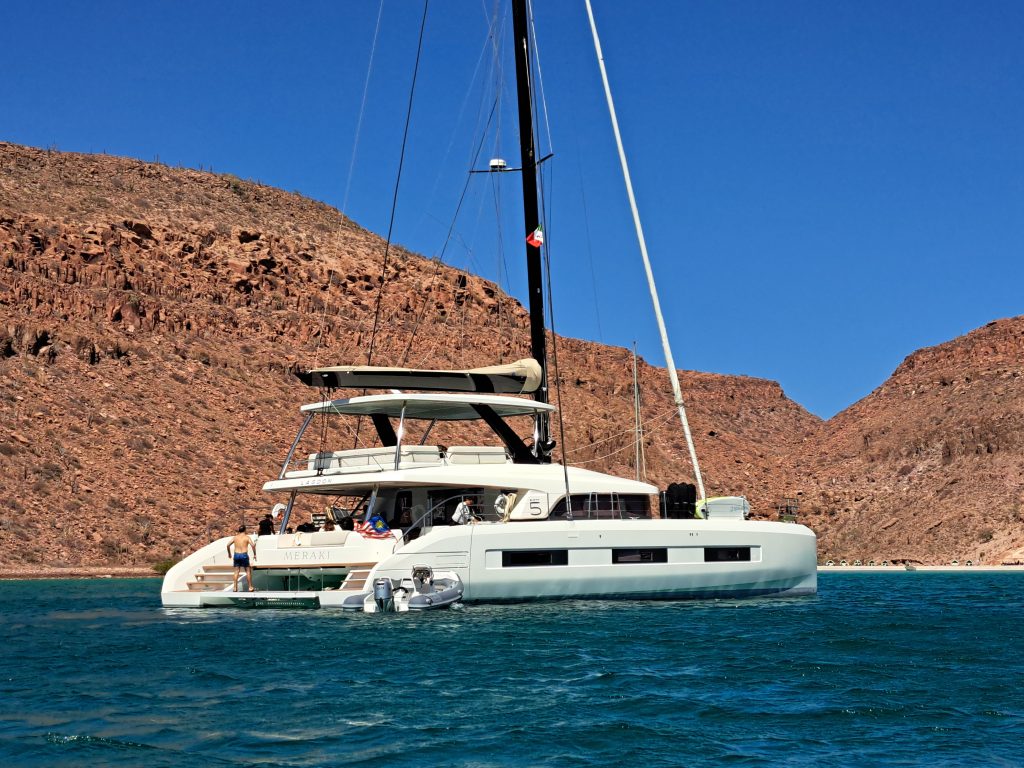
1. Stability and motion at sea
Catamaran: Wide beam and twin hulls make catamarans extremely stable at anchor and under sail. Minimal heeling (leaning) means guests who are prone to seasickness often find catamarans more comfortable. The reduced roll makes moving about on deck and below easier, and sleeping is generally steadier. However, in certain sea states catamarans can slam into waves between hulls (wave slam) and may feel snappy in steep chop.
Monohull: Monohulls heel under sail, offering a classic sailing sensation many sailors love. Heel improves sail efficiency and helps the boat cut through waves, which can feel more connected to the wind. Motion at anchor can be more pronounced than a catamaran, and some guests may find rolling or heeling less comfortable, especially below decks. Experienced crews and proper sail trim reduce uncomfortable motion.
Which to choose: If comfort and reduced seasickness are top priorities, pick a catamaran. If you want the classic sailing feel and are happy with heel, a monohull is more engaging.
2. Space, privacy and living comfort
Catamaran: Two hulls allow for wide saloons and multiple cabins with en-suite bathrooms on many charter cats. Large foredecks and trampolines create extra outdoor living space. Catamarans often have separate cabins with easy access and more standing headroom, making them ideal for families or groups seeking comfort and privacy.
Monohull: Cabins and communal spaces are generally narrower and more centralized. Below-deck headroom can be lower, but the interior layout often feels cozier and more traditional. Monohulls typically offer more storage for extended offshore passages and can have large cockpit areas for socializing under sail.
Which to choose: For maximum living space and privacy, pick a catamaran. For traditional boat feel and a single-hull layout often preferred by sailors, pick a monohull.
3. Sailing performance and handling
Catamaran: Cats are fast off the wind and excel on reach and downwind sails; their light weight and wide beam reduce wetted surface and increase speed potential. However, upwind performance can be limited compared with a well-trimmed monohull; cats may require more attentive sail and course choices. Maneuvering in tight marinas can be easier with twin engines (one per hull) allowing precise pivots.
Monohull: Monohulls often point higher into the wind and can be more forgiving in heavy seas. Their keel provides righting moment; when pressed, they heel and carry sail well. For those learning to sail, monohulls offer clearer feedback through heel and helm balance, which is useful training. Single-engine docking requires skill, but many skippers enjoy the challenge.
Which to choose: For speed and space on downwind passages, choose a catamaran. For upwind performance, classic sail handling, and training value, choose a monohull.
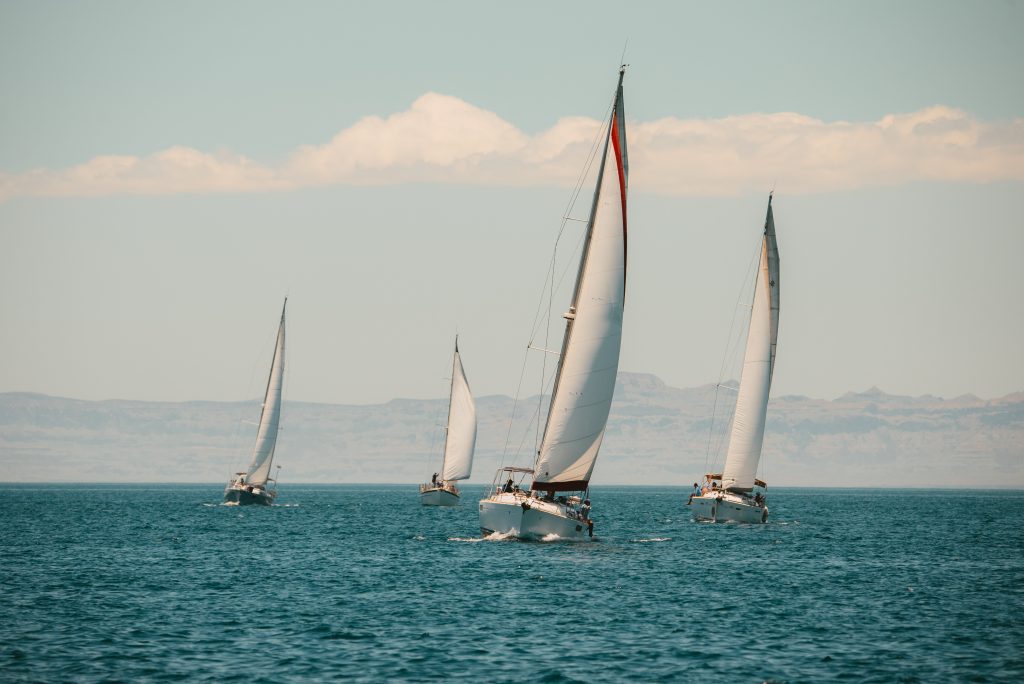
4. Safety considerations
Catamaran: Catamarans rarely capsize and are very stable at anchor, but if they do capsize recovery is extremely difficult. Because of shallow draft, cats can anchor in shallow coves where monohulls can’t, a plus in the Sea of Cortez. Structural loads and mast support are different; proper maintenance and experienced crew are vital.
Monohull: Monohulls heel and recover naturally; their deep keel provides strong righting moment making capsize unlikely in typical charter conditions. Heavy-weather handling and storm tactics differ — reefing early, storm sails, and sea-anchor procedures are all part of safe seamanship. Both platforms rely on well-maintained rigging, safety gear, and competent crew.
Which to choose: Both are safe with experienced operators — choose the platform whose safety trade-offs match your comfort and activity plans.
5. Cost and charter logistics
Catamaran: Generally more expensive to charter due to size, comfort amenities, and demand. Fuel consumption can be higher when motoring because of two hulls and twin engines, though under sail cats can be fuel-efficient. Availability for last-minute charters may be limited in some regions.
Monohull: Often less costly to charter and operate. Single-engine systems and simpler rigging mean lower maintenance costs. Monohulls may be easier to find for budget-conscious travelers or those booking off-season.
Which to choose: If budget is tight, a monohull is usually more affordable. If you value space and can budget for it, a catamaran is worth the extra cost.
6. Best uses and who should choose which
Catamaran is best for:
- Families, groups, or travelers seeking comfort and space.
- Guests prone to seasickness.
- Social trips and parties where spacious decks and saloon matter.
- Shallow-anchorage snorkeling and beach access.
Monohull is best for:
- Budget-conscious sailors and those planning longer offshore passages.
- Sail-training, hands-on learning, and classic sailing experiences.
- Travelers who enjoy heel and the feel of a single-hull passage.
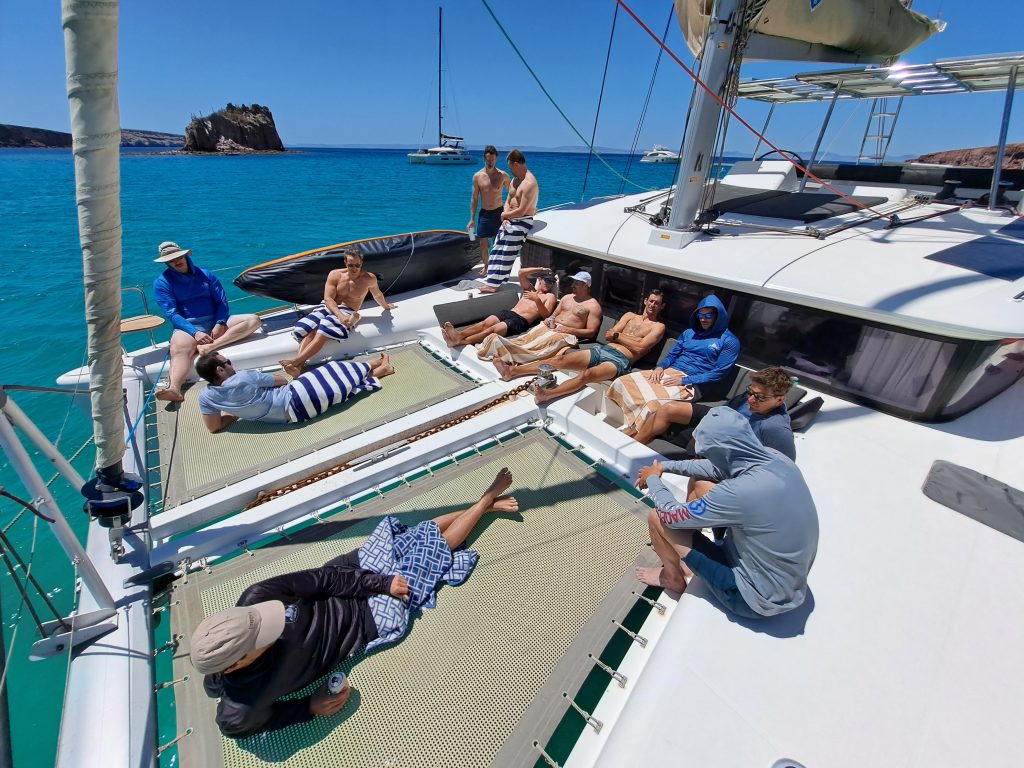
7. Activities and how each platform affects them
Snorkeling & beaching: Catamarans can anchor in shallower water and have easier swim-platform access on modern designs. Monohulls may need slightly deeper water but often have swim ladders and dinghies for landing.
Learning to sail: Monohulls give clearer feedback on sail trim and helm balance; many training courses use monohulls. Catamarans still teach valuable skills — navigation, sail trim, and watchkeeping — but the lack of heel changes the sensory feedback.
Wildlife watching: Both platforms work well; catamarans’ stability and quiet under sail can be advantageous for calm wildlife encounters.
Conclusion
Both catamarans and monohulls offer memorable sailing holidays in Mexico. Your right choice depends on priorities: choose comfort, space, and minimal motion — pick a catamaran; choose classic sailing feel, upwind performance, and lower cost — choose a monohull. If you’re still unsure, tell us your priorities (family, learning to sail, snorkeling, or budget) and we’ll recommend the best boat and itinerary in the Sea of Cortez. Contact us to compare available boats and book the perfect sailing holiday.

